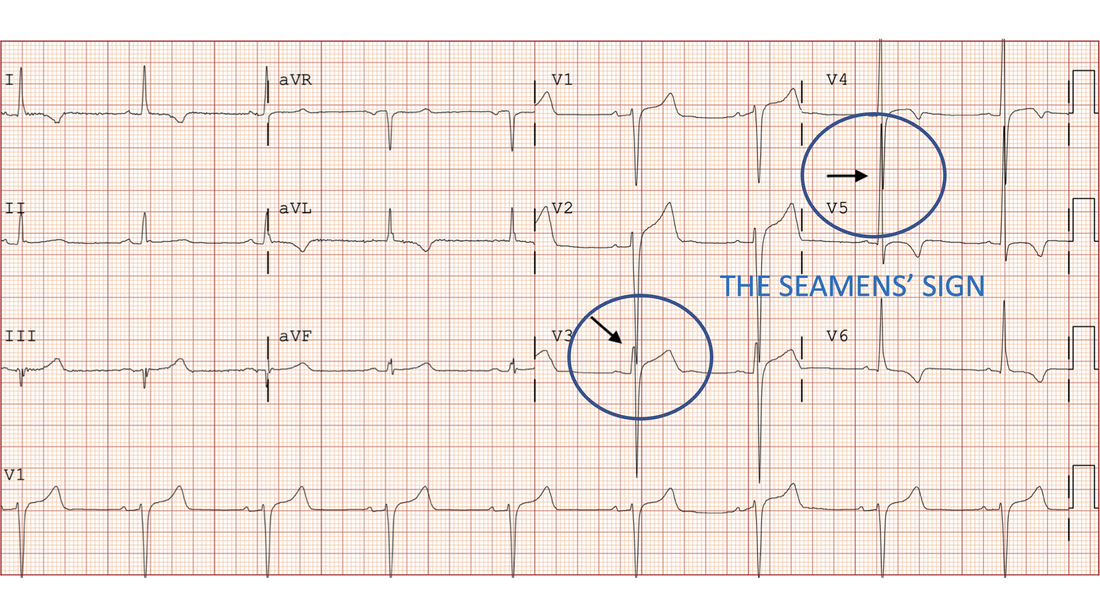We know that Left Ventricular Hypertrophy (LVH) when diagnosed on an ECG, is associated with a higher mortality and cardiovascular morbidity.
The gold standard for diagnosis is Cardiac Echocardiography, or ventricular mass measurements by MRI.
The ECG however can provide a helpful screening tool for patients, alerting us for the need for further investigations.
How do you determine if the ECG shows LVH?
MEMBERS go to LVH under the ECG section to read about:
- CORNELL CRITERIA
- SOKOLOW-LYON CRITERIA
- ROMHILT-ESTES POINT SCORE SYSTEM
A new study in Peer Journal, looked at the new Seamens’ Criteria.
The SEAMENS’ SIGN
This is a new proposed sign from the recent literature(1).
The Seamens Sign is as follows:
If any of the QRS Complexes in the precordial leads in a 12 lead ECG, touch or cross another QRS complex, this is defined as LVH.
This was a retrospective chart review of 2184 patient records in a Quartenary Centre and looked at consecutive patients with an ECG and a trans thoracic echocardiogram, performed within 90 days of each other.
The Primary Endpoint was to determine if the Seamens’ Sign was non inferior in confirming LVH compared to other criteria.
Conclusion
When compared to the Sokolow-Lyon criteria and the Cornell criteria for males, the Seamens’ Sign was non-inferior in confirming LVH on an ECG. Below is the example.











